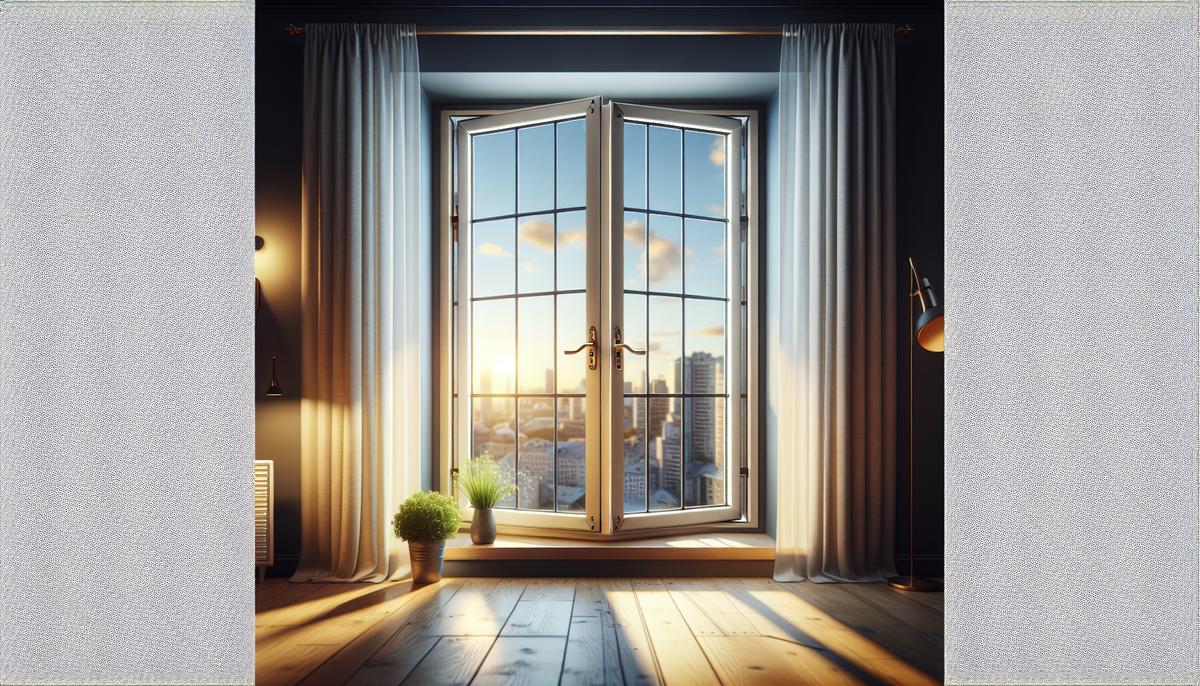WINDOWS

Date added: 07.11.25
How to choose hardware for PVC windows
Why window hardware matters
Hardware is more than moving parts — it determines security, airtightness, ease of use and the lifetime of a PVC window. The right fittings ensure even compression of the sash, reliable locking, controlled ventilation and safe operation for all family members.
Main components of window hardware
- Handles and locks — control the sash, include locking positions and tilt ventilation.
- Hinges and bearings — carry the sash weight and ensure smooth movement.
- Espagnolette or multi-point locking mechanism — the number of locking points affects sealing and safety.
- Covers and caps — protect fasteners from dirt and corrosion.
- Strike plates — receive locking points and increase resistance to forced entry.
Types of mechanisms and their purpose
- Tilt-and-turn hardware — versatile: tilt for ventilation, turn for full opening.
- Multi-functional hardware with friction hinge or lifter — recommended for heavy sashes to ease operation.
- Anti-burglary hardware — reinforced locks, additional bolts and heavy-duty strike plates.
- Soft-close and dampers — provide gentle closing and extend component life.
Materials and finishes
Choose hardware made from corrosion-resistant steel or treated alloys. For coastal or humid locations, opt for higher corrosion resistance classes (e.g., C4 or better) or stainless components.
Durability and operating cycles
Manufacturers indicate cycle life (for example 10,000; 20,000; 30,000 cycles). For residential windows 10–20k cycles are usually sufficient; for commercial or intensive use choose higher-rated hardware.
Security and burglary resistance
- Locking points: at least 2–3 around the sash for ordinary windows; 5+ for entrance or exposed openings.
- Reinforced strike plates and anti-lift features increase resistance.
- Certification to resistance classes (RC) or testing according to EN standards shows actual protection levels.
Comfort and extras
- Micro-ventilation (tilt position) allows airflow while preventing full opening.
- Child lock and handle blocker are essential for households with small children.
- Opening restrictors prevent wide uncontrolled sash swing.
Compatibility with profile and glass unit
Hardware must match profile dimensions and fixing points. Some profile manufacturers recommend specific hardware sets — this simplifies installation and future service.
Brands and price
There are reputable European brands (Roto, Siegenia, Maco, GU) and more budget-friendly options. The differences are in material quality, manufacturing tolerances, number of locking points and warranty terms. Choose according to required security level and expected usage intensity.
Installation and adjustment
Even high-quality hardware needs correct installation and periodic adjustment. After installation check:
- smoothness of the handle movement;
- even compression and sealing along the perimeter;
- functionality of micro-ventilation and locks;
- absence of play or squeaks.
Adjustments are typically performed with an Allen key or screwdriver — follow the manufacturer’s instructions.
Maintenance and care
- Lubricate moving parts every 6–12 months with silicone-based lubricants or the manufacturer-recommended oils.
- Keep strike plates and guides free from dust and debris.
- Periodically check and tighten fasteners.
Practical checklist before buying
- Define the window type and required functions (ventilation, security, frequency of use).
- Check corrosion resistance class and cycle life from the manufacturer.
- Decide on the number of locking points (minimum 2–3 for residential use).
- Select extras: micro-ventilation, child lock, restrictor.
- Ensure compatibility with the profile and glass unit thickness.
- Compare warranty and available service support.
Frequently asked questions
Q: Do I need anti-burglary hardware for a fifth-floor apartment?
A: Upper floors are less vulnerable, but if the window opens onto a balcony or there is easy external access (trees, lean-to), consider reinforced hardware.
Q: How to tell when hardware is worn out?
A: Look for looseness, difficulty turning the handle, poorer sealing, or new squeaks — these are signs of wear.
Q: Can I replace only the handle?
A: Yes, handles are usually easily replaced. If the mechanism is damaged, the whole hardware unit may require replacement.
Conclusion
Choosing the right window hardware is a balance between safety, convenience and budget. Invest in proven mechanisms especially when durability and protection matter. Proper installation and routine maintenance will preserve window performance and extend the service life of the fittings.
DK-Logi blog topics and categories
Useful articles about PVC windows, blinds, and practical advice for your home.

GET A FREE WINDOW COST ESTIMATE!
Leave a request, and we will contact you to arrange a free measurement and provide a full cost estimate.

2025 © All rights reserved



